#limulus polyphemus
Explore tagged Tumblr posts
Text
CRAB! CRAB! CRAB!
The Horseshoe Crab pattern is now available!

Available on ko-fi for $35 USD or pay-what-you-want!
I’ve been completely blown away by the response to my horseshoe crab! Since a bunch of people have expressed interest in making their own, I've put together a pattern and instructions so anyone who wants to can make their very own sea puppy to love and to hold.
This is a digital download which includes instructions and the pattern, printable either on a standard home printer or on a wide-format architectural printer.
The instructions are for leather; however, the pattern pieces should work in other materials as well– you may just have to adjust slightly for any different medium you use. (For example, for fabric, you would need to add seam allowance.) Stiff, non-stretch materials are recommended for the best results.
If you make a horseshoe crab of your own, please tag me in any photos you post– I’d love to see them! I’m excited to see different takes on it.

Go forth and make a creature!
https://ko-fi.com/s/f0197da98e
2K notes
·
View notes
Photo

Living Fossil
An Atlantic horseshoe crab (Limulus polyphemus) in the mangroves of Ria Lagartos nature reserve, Yucatán. Females can lay up to 20,000 eggs in one night playing an important role in providing nutrient-rich eggs to migratory birds.
by Fernando Constantino Martínez Belmar, Mexico
Mangrove Photography Awards
#fernando constantino martinez belmar#mexico#photographer#mangrove photography awards#living fossil#atlantic horseshoe crab#crab#marine#limulus polyphemus#ria lagartos nature reserve#yucatan#animal#nature
36 notes
·
View notes
Photo


© Peter Arkle 2023 HORSESHOE CRAB
5 notes
·
View notes
Text
Uncharismatic Fact of the Day
Can you do a backstroke? The horseshoe crab can! These creatures spend most of their time crawling along the ocean floor, but when they need to they can turn over and swim on their backs at a breakneck 0.54 kph (0.34 mph), using all six of their legs and the thick gills along their bellies-- called book gills-- to generate momentum.
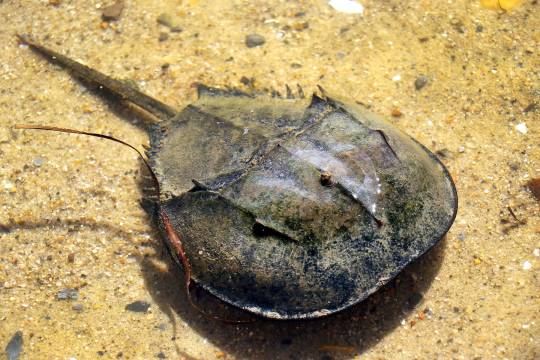
(Image: An Atlantic horseshoe crab (Limulus polyphemus) by John Tlumacki)
If you like what I do, consider buying me a ko-fi!
195 notes
·
View notes
Text
The State Birds Initiative: Delaware (#1)

Welcome to the first official poll of the State Birds Initiative! Now, before the poll, one thing real quick. My suggestion is that you read the post below before voting in the poll below. That's especially important if you're lacking any context about the birds being presented as the new (or old) State Bird of the First State, Delaware. This is to be fully informed as to why these are being presented, and to make your choices appropriately. Lastly, some of these birds, you will notice, go against some of the rules listed in the introduction post. All is explained after the jump where the explanations are, I promise you that. But with that...OK! Here's the poll!
More details after the jump!
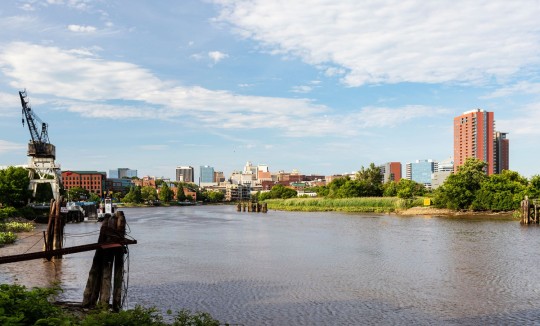
Welcome to Delaware, the First State!
Admitted into the Union in 1787 as the first state of this country, Delaware is the nation's second smallest, giving it the additional nickname "the Small Wonder"! Its capital is Dover, its most populous city if Wilmington (pictured above), and it's best known for its proximity to the Delaware River and the Delaware Bay, which it's actually named after. This does mean that Delaware Bay, for various reasons, will be one of the most important features of this post, since the wildlife that gathers around it is pretty ubiquitous in the state.
But OK, enough grade-school reporting of basic state statistics. What's Joe Biden's home state actually like, from the view of the citizens? On reddit, a user named hajisaurus said that Delaware is like a small town, but as an entire state. Compact, but eventful and familiar. Another user, raycooke, referred to it as the US condensed into miniature, with business in the north, beaches in the south and east, and farms in the middle. But the general vibe, it seems, is "familiar". Not overly friendly, but definitely close enough to be familiar. Also...the Bobbie.

God, that's a good looking sandwich. Invented in Delaware? Hell yeah. Anyway, off of turkey and onto birds. Personally, what all this says to me is that the chosen State Bird should be an easy-to-find sight, found throughout most of the state, and familiar to Delawareans in general. Something common but uniquely Delawarean would be great. In terms of habitat, water-bound seems appropriate, especially looking at beaches and estuaries. Again, the entire eastern border of the state touches the Delaware River or Bay, meaning water is somewhat important to the state (as is seafood).
Now, those Delawareans amongst us may have different opinions of what makes Delaware Delaware, and what represents its people most accurately. Which...yeah, I'm not from there, and I've only been there twice, and that's because I drove through it. Maybe went to one rest stop near Dover. And for the record, SOLID-ass rest stops in Delaware along the highway, just saying. Great job there, Delaware. But, yeah, PLEASE tell me if there's something else to take into account. And that goes for ALL of the states in this series, by the way. I can't claim to be an expert in any way here, so please call me on my bullshit if you feel that you have to. But, with that said, let's talk about what I do know: birds.
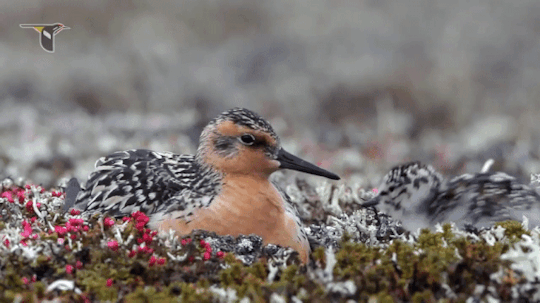
Red Knot (Calidris canutus)
For many of you, especially the bird-inclined amongst us, this was always going to be the obvious answer to this question. The Red Knot is an iconic Delaware bird for birdwatchers, as they're attracted to the state in MASSIVE numbers during migratory seasons. It's one of the most important and famous migrations in the country, and the flocks of Red Knots and other shorebirds are the main attraction. Why? Easy answer: the Atlantic Horseshoe Crab (Limulus polyphemus).
Delaware Bay is the site of the horseshoe crab's largest migration in the USA. This isn't the only place in the country they're found, but it's DEFINITELY the largest population of the species by a SIGHT. And speaking of iconic species, the horseshoe crab certainly fits the bill as a charismatic species of conservation concern. Which is why it may be curious that I'm highlighting the Red Knot, since they, y'know...EAT horseshoe crab eggs, alongside other birds in the great Atlantic seaboard migration. But that's actually why horseshoe crabs are so important.

Red Knots, amongst other shorebirds, depend on the horsehoe crabs for food, as these stopovers in Delaware Bay allow them to continue with their journey. Without the horseshoe crabs of Delaware, their life wouldn't be possible, and certainly not in the massive numbers found during migration. Understand, this is a threatened species, especially in the United States, that gathers in Delaware Bay in the thousands, with 2022 numbers being about 39,800 in a population. That's HUGE. The Red Knot is a symbol of this ecological boom, and both species should be celebrated. That's the reason the Red Knot is often given as the answer to this question of State Bird of Delaware, including by the Lab of Ornithology's article posted last year. Plus, it's got an iconic appearance, it's easy to find, and it tells a great story (which also includes a migratory distance of ~9,000 miles, which is crazy). Perfect, right?
...It doesn't breed in Delaware. It actually doesn't even breed in the United States. No, the Red Knot breeds in Nunavut and Greenland, above the limits of the Arctic Circle. I meant it when I said the Red Knot used Delaware as a stopover site. As such, it's an event when they arrive in Delaware twice a year...but they do leave. Pretty quickly, even. So, sure, the Red Knot is a great candidate for a number of reasons, but...is it OK if it doesn't actually breed in the state? I'd argue for it, since Delaware is is highest abundance of the species during migration in the country, and it's iconic in that way in particular. But I'll leave that as a question for you all to decide.
Let's go on to the next one, shall we?
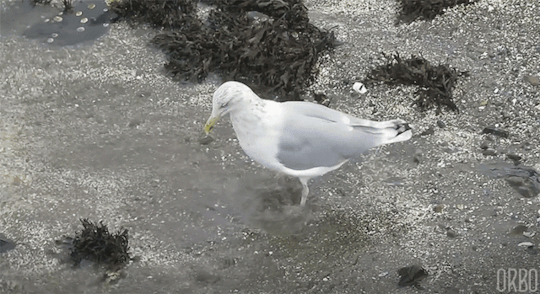
Ring-billed Gull (Larus delawarensis)
OK, this one might be cheating a bit, since the bird in question is found basically...well, everywhere. It's definitely not native to Delaware alone, and doesn't even breed there. So why even include this bird in the running? Easy answer: it's in the name. It's the only bird species in the world with the state of Delaware in its scientific name. However, this is also cheating, since the name actually refers to the Delaware River, not the state itself. That's because the bird was first described and discovered along the river, which flows from New York, through New Jersey and Pennsylvania, until ending in Delaware and the Delaware Bay. And yeah...technically that was in New Jersey. BUT STILL! Only bird with Delaware in the name, just sayin'. And after all, if the Red Knot can be considered despite not breeding in the state, then...what about the Ring-billed Gull? Or...maybe I'll save this one for New Jersey.
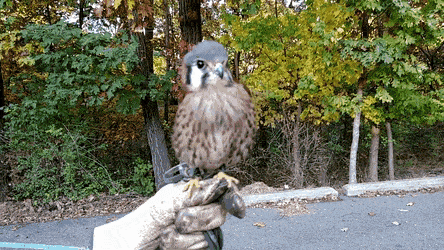
American Kestrel (Falco sparverius)
OK, this one I'm actually a bit enthusiastic about, partially because I love raptors, and I especially love this raptor. The American Kestrel is a small falcon, and is in fact the smallest falcon (and raptor) in North America. About the size of a mourning dove, they're pint-sized predators, specializing on insects, rodents, lizards, and the occasional sparrow or songbird. They're also versatile, living all over the USA in various habitats. And that, of course, includes Delaware. This is a breeding species in the state, so it already has that above the other two previously discussed! And to top it all off...it's literally a small wonder. Come on, man! This is perfect! A scrappy falcon that's literally red, white, and grayish-blue!
But, OK, if it's common all over, why specifically Delaware? Because it's actually threatened in Delaware, fun fact. This is prominent enough to have inspired the Brandywine Zoo to work with the American Kestrel Partnership (part of The Peregrine Fund, who we'll discuss again on another day or five), and start the Delaware Kestrel Partnership, which monitors kestrel populations in the state. The species' population has decreased by 88% in Delaware and surrounding states in the last 50 years, which is...dramatic. It's a species that desperately needs saving and attention, and work in Delaware can be applied in the kestrel's entire range. Look, I beg you to check this out, because it's a fascinating set of projects. And honestly, this alone would have me include the American Kestrel on this list. Plus...that would also make this the first raptor to become a state bird.
Yeah. Take a look. NO raptors amongst the State Birds. Insane.

Great Blue Heron (Ardea herodias)
Now, this one seems out of nowhere, but hear me out. For whatever reason, the Great Blue Heron (Ardea herodias) seems to be completely ignored as a state bird across the entire country, despite it being one of the MOST iconic birds in the United States. I mean, come on, almost all of us have seen a GBH at some point in our lives, especially if we live near water. But why suggest it for Delaware specifically, then? Well, the herons breed in Delaware, so that's checked off. They're found in the state year-round, making them easy to access and identify with. They're definitely iconic in appearance. They highlight the marshlands and wetlands of Delaware as an important ecosystem of concern. And...uh...
Look, I'll be straight with you. "Blue Heron" is the closest I could get to...another set of words associated with Delaware and birds. Because honestly, it's genuinely somewhat difficult to separate Delaware from those two words, and this would be a fairly minor change that would allow the use of that term with little fuss! And honestly, the Great Blue Heron isn't the worst choice in the world for Delaware, even if it admittedly barely breeds in the state compared to others. And...like...oh, goddammit, fine, let's get this over with.
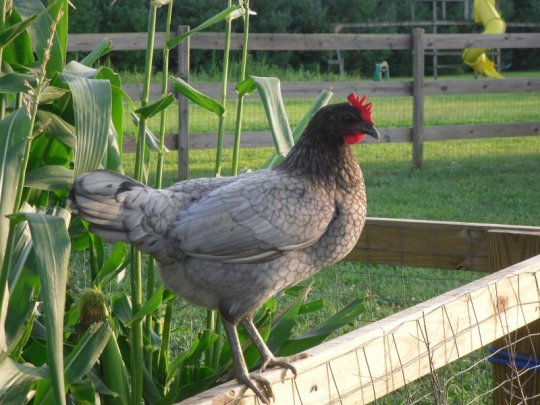
Delaware Blue Hen (Gallus domesticus)
Delaware. Look at me. Why...in the blue HELL...did you choose a goddamn chicken as your state bird? I mean, for God's sake, it's not a wild bird, and even if it is a breed developed in the state, IT IS A CHICKEN! What possible reason could there be to choose this bird over all the other possible birds? And look, I like chickens as much as the next guy. Used to raise and keep them as a kid, so I do love them, but this just feels wrong. But OK, let's make the argument for them by looking at Delaware's original argument.
So, from basic cursory research, the Delaware Blue Hen dates back to the Revolutionary War. Apparently, one of the regiments of the American army raised fighting game chickens that were so well-known, the regiment itself became known as the "Blue Hens". It's also possible that the leader of this regiment, Jonathan Caldwell, had a special blue hen that had blue offspring, and the men in the regiment also took to calling themselves "Sons of the Blue Hen." Which means...shit. That means the Blue Hen actually has cultural relevancy specific to the state of Delaware. Damn, that's actually a good argument for their assignment. But with that said...there actually is a problem here.
The Delaware Blue Hen doesn't technically exist.
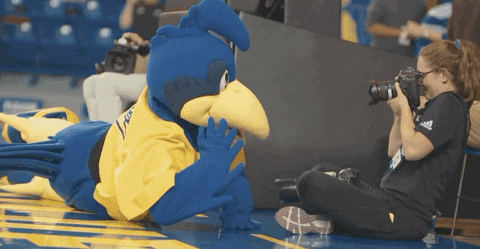
Yeah, this isn't actually a recognized breed of chicken, despite the INSANE amount of devotion Delawareans have for it. I mean, military regiments, sports teams, even the unofficial nickname for the state is named after the Blue Hen, and it's technically not a real chicken breed. Instead, they're actually American Game hens that are crossed with Andalusian Blue hens to get that iconic coloration, but they're not actually an isolated breed.
So...what does this mean? Because this is genuinely a problem, right? Delaware's state bird doesn't actually exist, AND it's a chicken. Well...I have a proposition for you, Delaware. Because I do recognize the fact that the Blue Hen seems to mean a lot to you, both now and historically. So, if that's the case, we need to recontextualize this guy in a couple of ways. So, here's my proposition...
Make the Delaware Blue Hen the State Game Bird.

Haven't brought this up yet, but some states have what's called a "state game bird" alongside the actual state bird. Game birds, by the classical and nonscientific definition, are members of the Galliformes and Anseriformes that are associated with hunting and food. And technically...the chicken counts. Yeah, Delaware easily could ratify the Delaware Blue Hen into service as the State Game Bird, which makes even more sense when you consider its role AS A SPORTS MASCOT! See what I mean? But that's not the end of it.
You'll also have to find some way to get the hen recognized as an independent breed. I have NO idea what the process is for that (I guess this is the pathway to do it?), but it's probably gonna take a bunch of breeders and number of years to turn this into a defined breed. Hell, as it stands, not every chicken hatched to a Blue Hen is even blue. So, hey, get on it, Delawarean chicken breeders! Make you state proud!
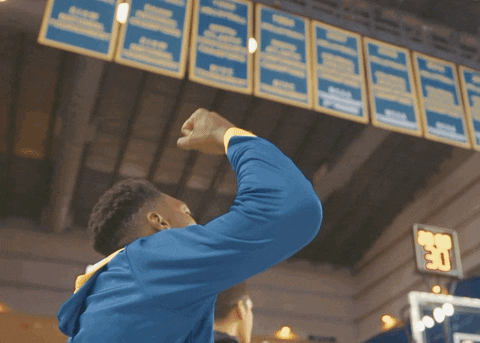
And that's the information on the candidates for the Delaware State Bird! Will the Delaware maintain its place? Will the Red Knot take it, despite the controversy surrounding the choice? Will my bullshit proposal for the Great Blue Heron actually resonate with some people? Up to Tumblr!
As for the next state, it's time to hop next door to Pennsylvania, and to a State Bird that also technically doesn't exist...for a somewhat different reason. And yes, for the record, I know the below GIF is technically the wrong species, BUT MY CHOICES IN GIFS ARE FEW

See you soon, and happy birding!
Introduction to the State Birds Initiative
1. Delaware - Poll | Results 2. Pennsylvania - Poll | Results 3. New Jersey - Poll | Results 4. Georgia - Poll | Results 5. Connecticut - Poll | Results 6. Massachusetts - Poll | Results
#bird#birds#birdblr#birding tumblr#bird tumblr#birders#birder#birding#black birder#birdwatching#birdwatchers#birdwatcher#state bird#state bird initiative#state birds initiative#state birds#poll#bird poll#tumblr poll#delaware#delaware blue hen#gallus domesticus#chicken#red knot#calidris#american kestrel#kestrel#falco sparverius#ring billed gull#gull
69 notes
·
View notes
Text
Neat study about horseshoe crab spawning! Gives great insight on the importance of coastal ecosystems!
https://esajournals.onlinelibrary.wiley.com/share/IDRQPCKXNAYYWUPZFCD7?target=10.1002/fee.2738
The American horseshoe crab (Limulus polyphemus) spawns regularly in salt marshes
Sasson et al.
#horseshoe crab#marine biology#zoology#marine life#sea creatures#sea critters#marine ecology#save the wetlands#save our coastlines#invertebrates#study
8 notes
·
View notes
Text

Atlantic horseshoe crabs (Limulus Polyphemus).
Tallahassee, FL.
Horseshoe crabs are not crabs, but arachnids. They are more closely related to spiders than crustaceans. They are one of the most ancient organisms on earth. Horseshoe crabs are an endangered species due to human activity. The blood acts as a very effective indicator for contaminants in injectibles. People capture them, bleed them, and release them; though not all of them survive long after.
If you’ve ever had a vaccine, you can thank a horseshoe crab.
Horseshoe crabs have some sexual dimorphism. The females are much larger. The males are smaller and have claws on their front most appendages for clasping onto a female.
8 notes
·
View notes
Text
Horseshoe Crabs



Name: Horseshoe Crab
Scientific Name: Limulus polyphemus
Family: Limulidae
Location: "Although spawning as been observed as far north as Augustine Beach, in Delaware and Alder Cove in New Jersey, prime spawning beaches within the Delaware Bay consist of sand beaches between the Maurice River and the Cape May Canal in N.J. and between Bowers Beach and Lewes in DE."
Status: Vunerable
Fun Facts:
• Horseshoe crabs actually aren't crabs! They're more closely related to spiders, tics, and scorpions.
• They have existed for at least 445 million years; they've remained mostly unchanged throughout it all, prompting some to call them 'Living Fossils'.
• They have blue blood which contains LAL, a very important substance used for sterilisation in the medical industries. If you've ever been vaccinated, thank a horseshoe crab!!

Sources: 🌊 / 🌊 / 🌊 / 🌊
#Sea Creature of the Week#marine biology#marine life#ocean#ocean creatures#ocean life#sea creatures#sea critters#sea life#horseshoe crab
10 notes
·
View notes
Note
May I offer: ocean bug (I grabbed this image from the Wikipedia page for Limulus polyphemus)

That’s a bug?! It’s huge! And look at that armor! Limulus Polyphemus… I love it.
#maccadam#transformers#ask blog#tf one orion pax#ask orion pax#orion pax#tf one#transformers one#asked and answered#chaotic spork
18 notes
·
View notes
Text

Emerald paperwasp Ropalidia saussurei
(Suggested by @rorybluez! Style is a bit different from the tarantula hawk but I hope you like it nonetheless, thank you for bringing these awesome little creatures to my attention!)
I struggled with this beauty a bit but I love her. Why is she so green.
Social species like this are what most people think of when they hear "wasp", but only a small handful of (sub)families actually share this lifestyle! By far most wasps, from the tiny fairyflies to the famous tarantula hawk, live as solitary parasitoids.
Digital zoo - into the wasp house she goes
You can look them up or go by vibes :D If you suggest something else and it doesn’t win, I’ll add it to my list for the future!
#digital art#my art#artists on tumblr#emerald paperwasp#ropalidia#insect#wasp#arthropod#bug#animal#digital zoo
11 notes
·
View notes
Text

Atlantic horseshoe crab (Limulus polyphemus)
#art#animal art#sciart#biology#science#artists on tumblr#digital art#digital#painting#horseshoe crab#crab#infographic#informational#drawing
7 notes
·
View notes
Text
...I am a cissexual straight man who does not carry a bag, and has not interest in carrying a bag...but I really want this bag. This is fantastic! I genuinely love this, it's adorable and very well-made! Amazing job!
For the record, I recently suggested that the American Horseshoe Crab (Limulus polyphemus) as a State Conservation Focus (if that were a thing, and I want it to be). Here's the post for anybody interested!
EDIT: WAIT THIS HAS A BACKPACK MODE???

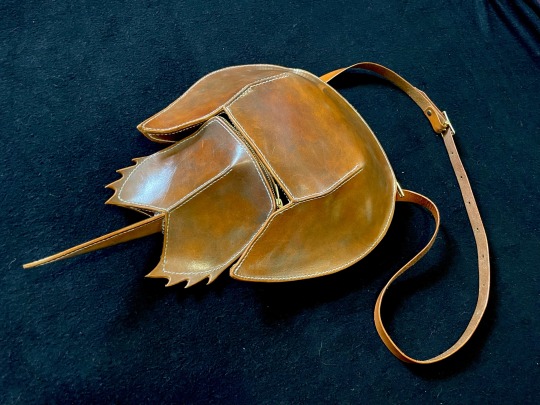
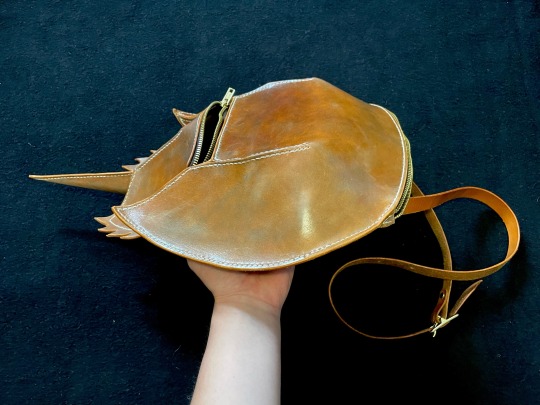
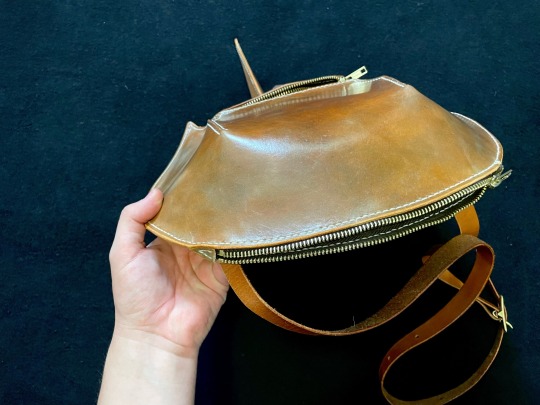
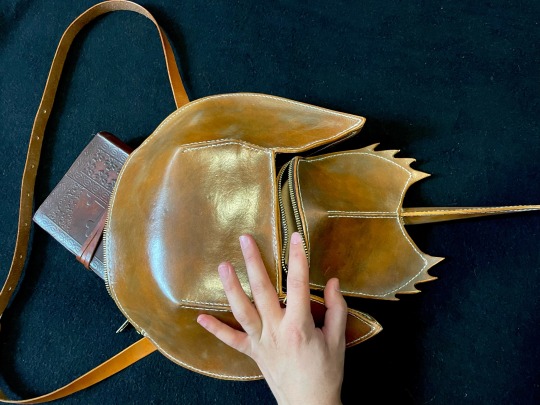
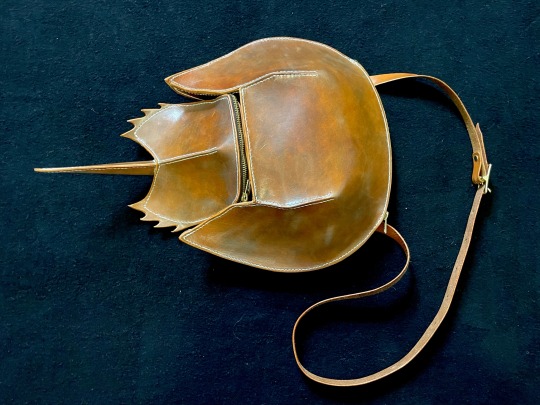
CRAB CRAB CRAB
This was my first time working with leather because I got a burning desire for a bag shaped like a horseshoe crab. It has two zippered compartments, and an adjustable strap so it can be worn at my side as a cross-body bag or on my back more like a backpack.
#horseshoe crab#limulus#limulus polyphemus#art#crafts#leather craft#leatherwork#bag#animals#animal#nature#delaware#migration#conservation#endangered species#threatened species#delaware bay
40K notes
·
View notes
Text

Extraído de Wikipedia
"La especie más conocida es Limulus polyphemus o cangrejo herradura, aunque son todos muy semejantes entre sí. Se consideran fósiles vivientes porque han evolucionado muy poco en sus más de 475 millones de años de existencia"
3 notes
·
View notes
Text
Happy International #HorseshoeCrabDay!

Heinrich Harder (German, 1858-1935) "Pfeilschwankrebs" [Horseshoe Crabs], 1916 Collector Card from Tiere der Urwelt [Animals of the Prehistoric World] Series I
Horseshoe Crabs (Xiphosura) have been around for a long time...their fossil record goes back over 440 mya! This card illustrates the Atlantic Horseshoe Crab (Limulus polyphemus), one of four still-living species and the only one native to the Americas. Also, their common name is misleading - they are not true crabs or even crustaceans, but rather chelicerates, making them closer relatives of arachnids and sea spiders!
#animals in art#animal holiday#european art#20th century art#card#collector card#ephemera#HEinrich Harder#German art#1910s#horseshoe crab#horseshoe crabs#Atlantic Horseshoe Crab#International Horseshoe Crab Day#arthropods#aquatic creatures#sea creatures
9 notes
·
View notes
Note
trick or treat !! I dont talk much here, but I think your v cool & funky and I always love seeing your funky things :DD
Thank you friend! I appreciate your kind words. :)
Tell you what. On May 8th, you sent me an ask about horseshoe crabs, and I wanted to make a little comic about them like I've done with Magnapinnas and some other sea friends. I did the research, I have the sources down, I even got to finishing all the sketches and some lineart! But, for some reason I lost motivation midway through, I just wasn't very happy with how my art looked in the comic so production slowly fizzled out. Here's an unfinished page with a distribution map for all the species of horseshoe crab! Done by hand by yours truly.
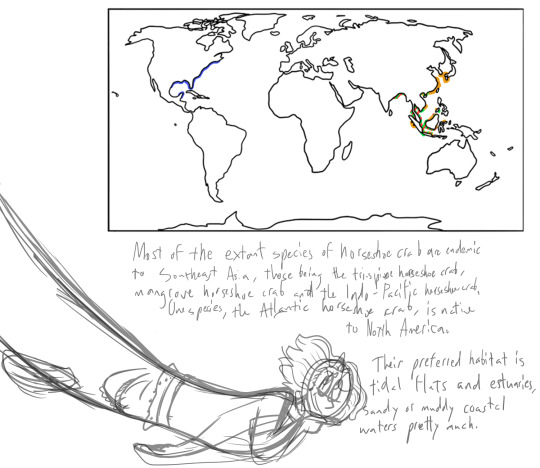
Blue is Atlantic horseshoe crab Limulus polyphemus, orange/yellow is trispine horseshoe crab Tachypleus tridentatus, green is mangrove horseshoe crab Carcinoscorpius rotundicauda, and red is coastal horseshoe crab (called Indo-Pacific horseshoe crab here) Tachypleus gigas. Hope this suffices as a treat!
12 notes
·
View notes
Text
The State Bird Initiative: Delaware (#1) - Results

All right, poll is done! Meant to run it for a week to get as many responses as possible, but I Blazed it and got 300 votes, which is pretty good for the first one of these posts, in my opinion! So, what does a small group of Tumblr contributors think the state bird of Delaware should be?

...Huh.

SBI Elected State Bird of Delaware: Delaware Blue Hen (Gallus domesticus)
By popular vote, the incumbent State Bird, the Delaware Blue Hen (Gallus domesticus) retains its position as a representative of the state of Delaware! And I am...not surprised, actually.
Here's the thing, I really wanted this guy to be dethroned, because it's a domestic bird, and not a wild one, therefore having no conservation value whatsoever. So, yeah, it felt unimportant to me. But even I have to admit...I get it. The Delaware Blue Hen is pretty woven into the state's identity, as I mentioned in the original poll post. But, goddamn it...it's still not a real breed. So, Delawareans, you know what to do. Get this bird actually certified as a breed! Gonna need to do some hardcore selective breeding here, but if you want this breed to be legitimate and recognized, you gotta do it!
As for my personal opinion...well, here's my personal preference. And keep in mind, this is what I would do if I alone were in charge of the State Birds. SO...my personal choice is after the jump. But if you're good here, just knowing the Delaware Blue Hen is the pick, then I'll see you next time! And lemme tell you, Pennsylvania's gonna be interesting.

The State Birds Initiative Personal Pick - Delaware (#1)
State Bird of Delaware (SBI) and State Raptor (SBI): American Kestrel (Falco sparverius)
That's right, the American Kestrel (Falco sparverius) is my pick for the State Bird of Delaware. The Small Wonder State deserves a small wonder for a State Bird. It's red, white, and blue (by ornithological definitions of those colors), it's of conservation concern for the state, where it does breed, and...it's adorable. Look at him, he's cute as hell. So, that's my choice for the State Bird...but I'm not done.

State Game Bird of Delaware (SBI): Delaware Blue Hen (Gallus domesticus)
That's right, I agree that the Delaware Blue Hen should remain a state symbol. I just don't think it should be a State Bird. Give every state a State Game Bird, and let this be the species for Delaware. It works in every way possible. It even remains the mascot for University of Delaware, as a LITERAL game bird. Revisit my original post for more info on that, but I'm not letting go of this as a wish of mine. But hey...I'm STILL not done.

SBI's Big Fifty - Delaware: Red Knot (Calidris canutus)
The Big Fifty are birds that are highlighted by this poll project, but not qualified for or voted in as the State Bird for a given state. Additionally, they're birds of note in a given state, and that are highlights for any birdwatchers, beginning or veteran. Because it doesn't breed in the state, and only visits occasionally, the Red Knot (Calidris canutus) is a poor choice for a State Bird, despite its popularity as an alternative to the blue hen. But, even you guys agree, this doesn't work as well for that reason. But it is a major feature of the migration seasons, and should absolutely be highlighted somehow. So, the Red Knot gets a title as Delaware's representative of the Big Fifty! So, go out there and find it...in September and October, when migration is in full form.
BUT WAIT I AM NOT DONE

State Conservation Focus (SBI): American Horseshoe Crab (Limulus polyphemus)
OK, this is the last one. To be fair here, the American Horseshoe Crab (Limulus polyphemus) is already the State Marine Animal. That category is a little broad for my tastes, but I am glad it's been recognized at the very least. But that said...the horseshoe crab deserves a LOT more recognition for its ecological importance. I considered calling this category the State Keystone Species, but that won't be the case for all species of conservation focus. So, let's highlight this ridiculously important species by giving it a new category. This is an important animal. I'd rather it not be neglected.
And THAT is it, I promise. These categories will shift a little bit from state to state. You may have noticed that I labeled the American Kestrel both the State Bird AND the State Raptor. That'll come into play in the future, I promise. But for now, that's the SBI endorsement for State Birds and Conservation Symbol. Next time, Pennsylvania.

See you next time, and happy birding!
Introduction to the State Birds Initiative
1. Delaware - Poll | Results 2. Pennsylvania - Poll | Results 3. New Jersey - Poll | Results 4. Georgia - Poll | Results 5. Connecticut - Poll | Results 6. Massachusetts - Poll | Results
#bird#birds#birdblr#birblr#bird tumblr#birder#birders#birding#birdwatching#birdwatcher#birdwatchers#black birder#state bird#state birds#state bird initiative#state birds initiative#big fifty#state game bird#delaware#delaware blue hen#american kestrel#red knot#horseshoe crab#polls#tumblr polls#bird poll#bird posting
4 notes
·
View notes